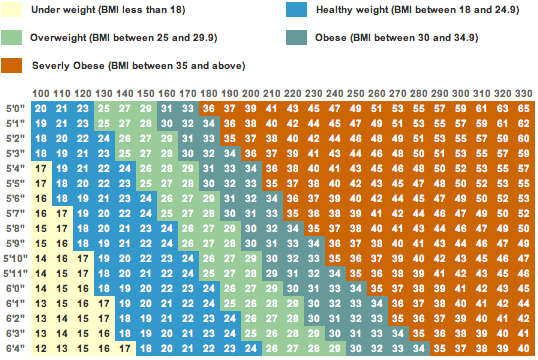BMI Calculator
Body Mass Index (BMI) is a universal standard that determines the health of an individual. It helps people to understand their weight condition. BMI tells you if you’re underweight, healthy, overweight, or obese. Most people use it to know how much fat their body has.
Studies have shown that a BMI that ranges from 19 and 24.9 means that the person is healthy. A BMI between 25 and 29.9 means overweight and any BMI that goes beyond 30 indicates obesity. A person’s risk of having diseases is high when they’re BMI is over 25 and it’s much higher when it’s beyond 30. The risk of having diseases and even death increases dramatically for people at this stage. To get a better picture, here are some specific examples.
If an average female in America has is 64 inches tall and weighs around 110 to 114 pounds, this means she’s healthy. But, if her weight is between 145 to 173 pounds, she’s already overweight. Having a weight of 174 pounds and beyond means this female is obese. An average American male that’s 70 inches tall is healthy if he weighs between 132 to 173 pounds. He is overweight if he weighs 174 to 208 pounds and obese if his weight goes over 209 pounds.
Most people believe that they are only big boned and not overweight. This originated from the insurance tables used years ago before BMI was implied. Insurance companies were the only ones who needed weight and height tables back then. They use it to estimate insurable life risk; this was done by classifying the people among large frame, medium frame, and small frame. Different tables are used for different groups; these tables are not scientific and accurate enough to give the information that the new generation needs.
BMI for children is a little bit more complex than adults. BMI for children is called body mass index- for-age percentile calculation. The difference between their BMI readings is because of the normal BMI-related changes that occur as they grow older; another reason is the regular sex difference BMI. So, let’s say a 10 year old boy and a 15 year old boy both received a result of BMI-for-age of 23. This means that the 10 year old actually is an obese while the 15 year old is normal and healthy.

